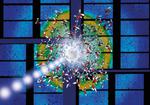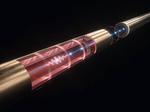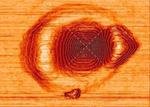Other

“Using a novel method, beams of laser light can be deflected using air alone. An invisible grating made only of air is not only immune to damage from the laser light, but it also preserves the original quality of the …

“Scientists using the H.E.S.S. observatory in Namibia have detected the highest energy gamma rays ever from a dead star called a pulsar. The energy of these gamma rays clocked in at 20 tera-electronvolts, or about ten trillion …

“Using the X-ray laser European XFEL, a research team has investigated how water heats up under extreme conditions. In the process, the scientists were able to observe water that remained liquid even at temperatures of more than 170 degrees Celsius …

“A team of DESY scientists has built a miniature double particle accelerator that can recycle some of the laser energy fed into the system to boost the energy of the accelerated electrons a second time. The device uses narrowband terahertz …

“DESY to build 100-megapixel camera for Israeli space telescope A new space telescope will open up an unprecedented view of the universe in ultraviolet light: The ULTRASAT satellite will provide fundamental new insights into high-energy phenomena such as supernova explosions …

“Research team successfully tests plasma photocathode for the first time Using a trick modelled on the Trojan Horse, a novel electron source can generate extremely brilliant particle beams. The new method uses plasma acceleration technology and promises 100 to 10 …

“Milestone for compact particle accelerators. A team of scientists from DESY and the University of Hamburg has achieved an important milestone in the quest for a new type of compact particle accelerator. Using ultra-powerful pulses of laser light, they were …

“Technologically important noble metal oxidises more readily than expected Platinum, a noble metal, is oxidised more quickly than expected under conditions that are technologically relevant. This has emerged from a study jointly conducted by the DESY NanoLab and the Vienna …

“A German-French research team has identified surprising properties of nano-holes in semiconductor materials produced by a promising technique: In their experiments, hot aluminum droplets have etched remarkable smooth holes in an aluminum gallium arsenide (AlGaAs) substrate. The method is suitable …

“Scientists achieve highest ratio of acceleration to deceleration in plasma wakes yet Scientists at DESY have achieved a milestone towards the usability of novel, plasma-based particle accelerators. Using the electron beam of the PITZ accelerator, the Photo Injector Test facility …

